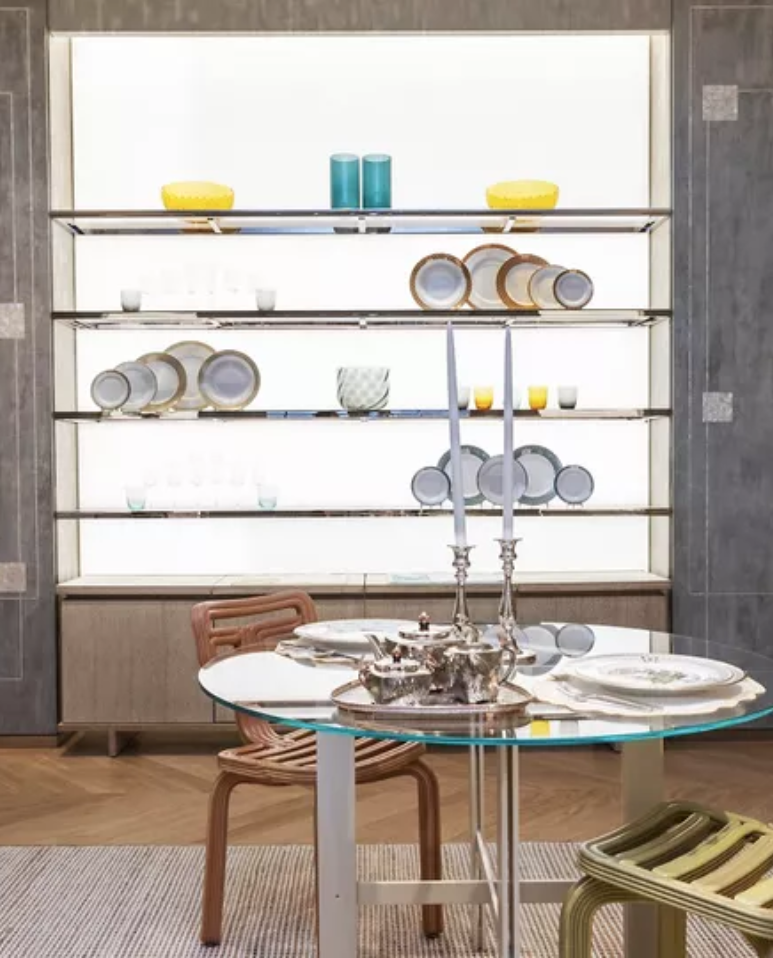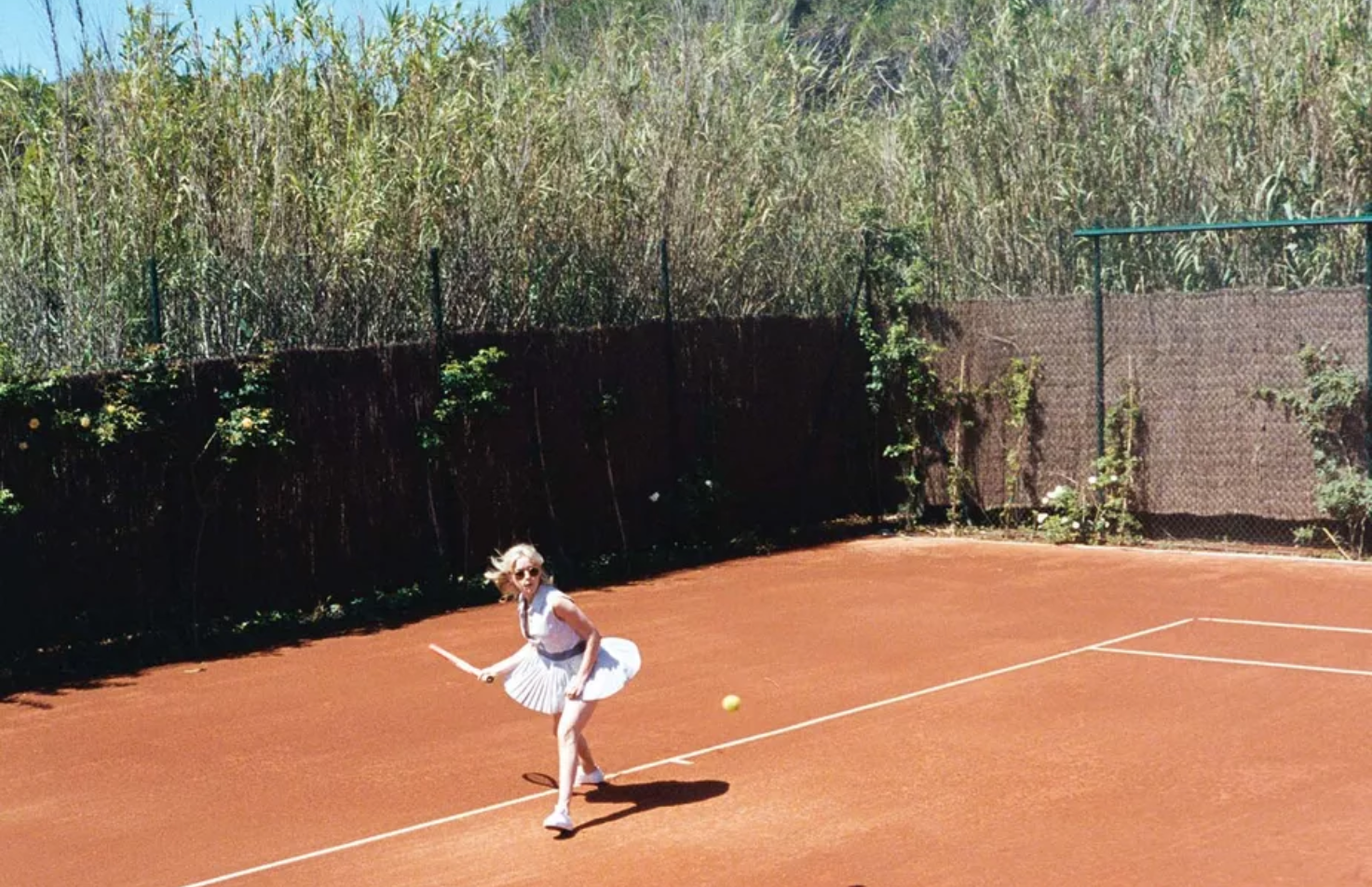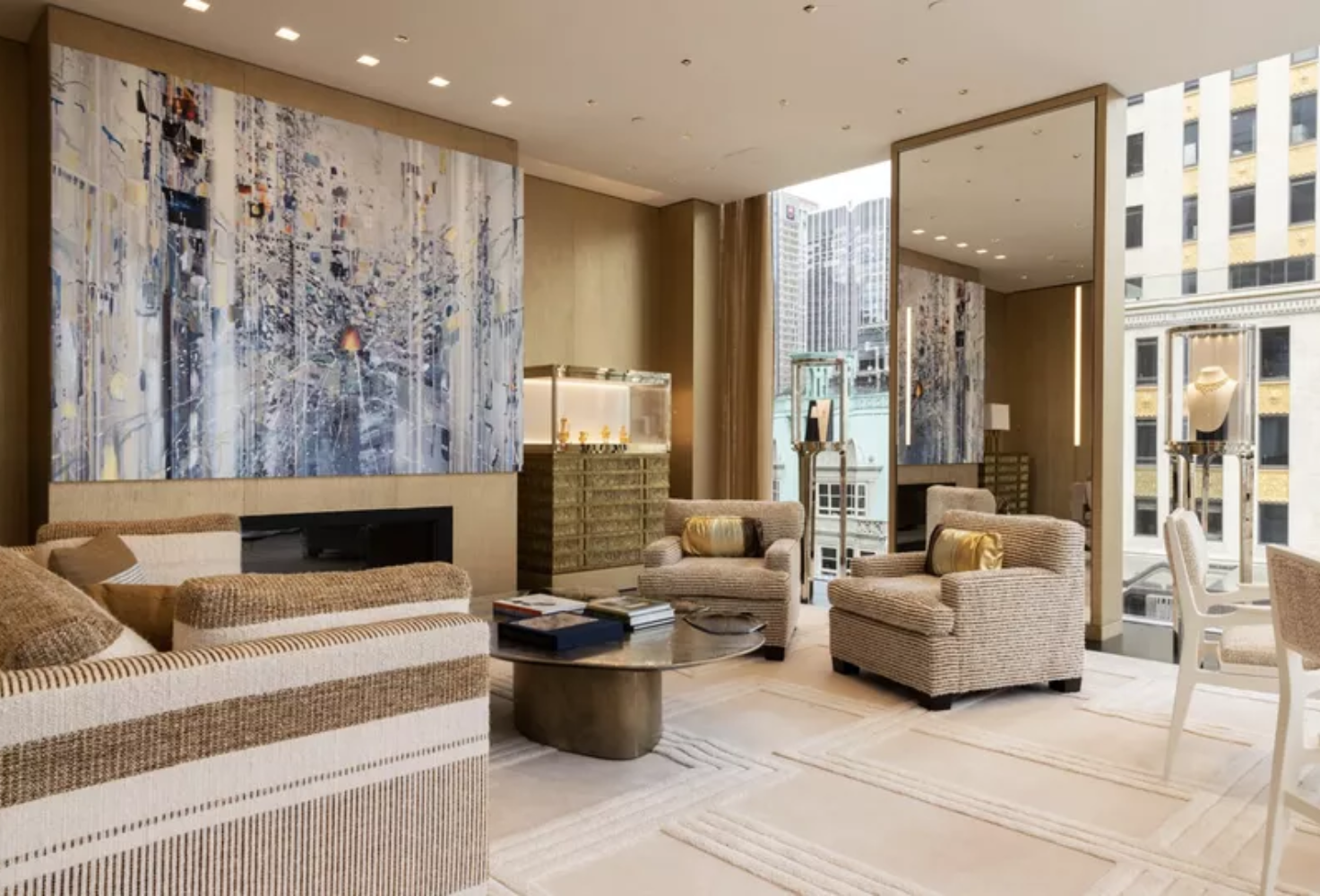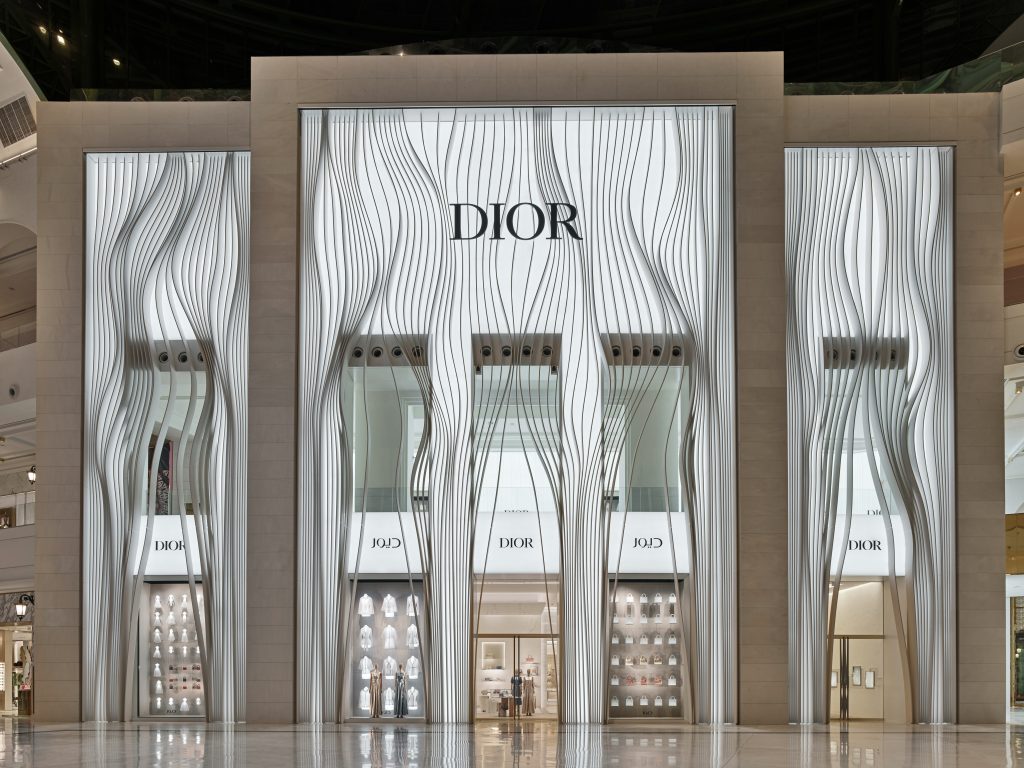The halo of exclusivity that surrounds luxury in physical places was endangered when many companies and brands were forced to operate digitally if they wanted to guarantee sales during the pandemic. With restrictions now lifted, the luxury sector has returned to its old ways, supported by a type of
consumer whose income is resilient to crises, and offering them kinds of products and services that are based more on the shopping experience and not so much on the ultimate goal of that transaction. This is a type of consumer who is willing to pay up to 20% more for a personalised, exclusive product (source: Deloitte).
Interior design will benefit from this – 62% of consumers say that booking appointments in a shop could inspire them to return to physical stores (source: Accenture) – since luxury is a veritable playground where new, ultra-private spaces that encourage a more intimate connection with clients are
generated, based on tastes, and these are significant for
clients.

In recent years, people have changed their perception in terms of unbridled displays of wealth. The luxury market is seen as one of the most resistant sectors in the midst of the world’s general recession, with a growth forecast of between 3% and 8% in 2023 (source: Financial Times). The year 2022 closed with the record number of 218,200 people deemed to be of super-high purchasing power (source: The Guardian). “The relative boom of luxury isn’t merely down to a ‘COVID-19 episode’ that has seen the rich get richer. It’s also the result of a strategy that’s been carefully cultivated over the years,” says Selvane Mohandas du Ménil, managing director of the International Association of Department Stores (IADS). “This expansion is based on a combination of, firstly, mainstream or permanent products that are generally affordable for all; secondly, aspirational experiences that generate additional income flows; and thirdly,
super-exclusive products only affordable to the (very) rich and (not-so-publicly) famous.” This last strategy has caused many luxury brands to change the way they sell their product from flamboyant tactics to a more subtle, reserved focus known as ‘quiet luxury’.

«An omni-channel nature is a winner when it comes to the shopping experience consumers seek. The digital now complements the physical, which is emptying of products and leaving space for experiences and activities that provide value.
This will have an impact on the brand, not only in financial terms, but also in relation to loyalty and brand perception.». Andrea Caruso, Ciszak Dalmas
«The change in how products are displayed is interesting. Where previously we tended to display everything to the consumer, now it’s more intriguing to reduce the volume of product on display. The store acts as a curator of its catalogue, carefully selecting from its product portfolio, which also gives value to what is seen, while creating an air of mystery around what is not.”». Andrea Caruso, Ciszak Dalmas

Evolving in response to a more responsible and discreet consumer mindset, the luxury sector is introducing new goods and services that provide a deeper sense of purpose. According to a McKinsey report, personalisation has become an essential strategy for brands, with nearly 90% of consumers valuing it as much or even more than just a few years ago. On the other hand, the democratisation of luxury has prompted many high-end brands to become more accessible and recognisable to the general public, such as by selecting activists as brand ambassadors and launching more affordable digital offerings. Within this landscape, brands are keen on acknowledging the value of their Very Important Customer (VIC) clientèle, by investing in exclusive advantages and services to attract these precious customers.
“These customers provided significant resilience. They don’t necessarily shop in stores; they lean more towards private events and personal shopping. Brands can engage with them even when the stores are closed,” remarks Claudia D’Arpizio, a partner at Bain & Co. The surge in this super-exclusive retail strategy is a response to the ubiquity of e-commerce and the widespread
accessibility of luxury products. Brands are channelling investments into creating experiences, spaces and services that defy replication, often because they are accessible only through brand invitations, making the shopping experience reminiscent of visiting the home of a close confidant.
Luxury e-commerce platforms must address the possibility of hosting exclusive in-person events to attract VICs (Very Important Customers) and create more tangible, memorable experiences.
Products are displayed on shelves or glass wardrobes so product display isn’t as obvious as it usually is in a shop. Spaces are created for relaxation, as well as passageways with a rhythm that resembles a real home.
Shops are combined with private club models in the vein of Soho Club or Juno, or even hospitality establishments.
The store space is becoming an object of desire among shoppers who show an interest in visiting physical stores thanks to their architecture or the experiences that can only be enjoyed in the physical space. Secret locations, hospitality experiences and exclusive products will be some of the draws for shoppers.
